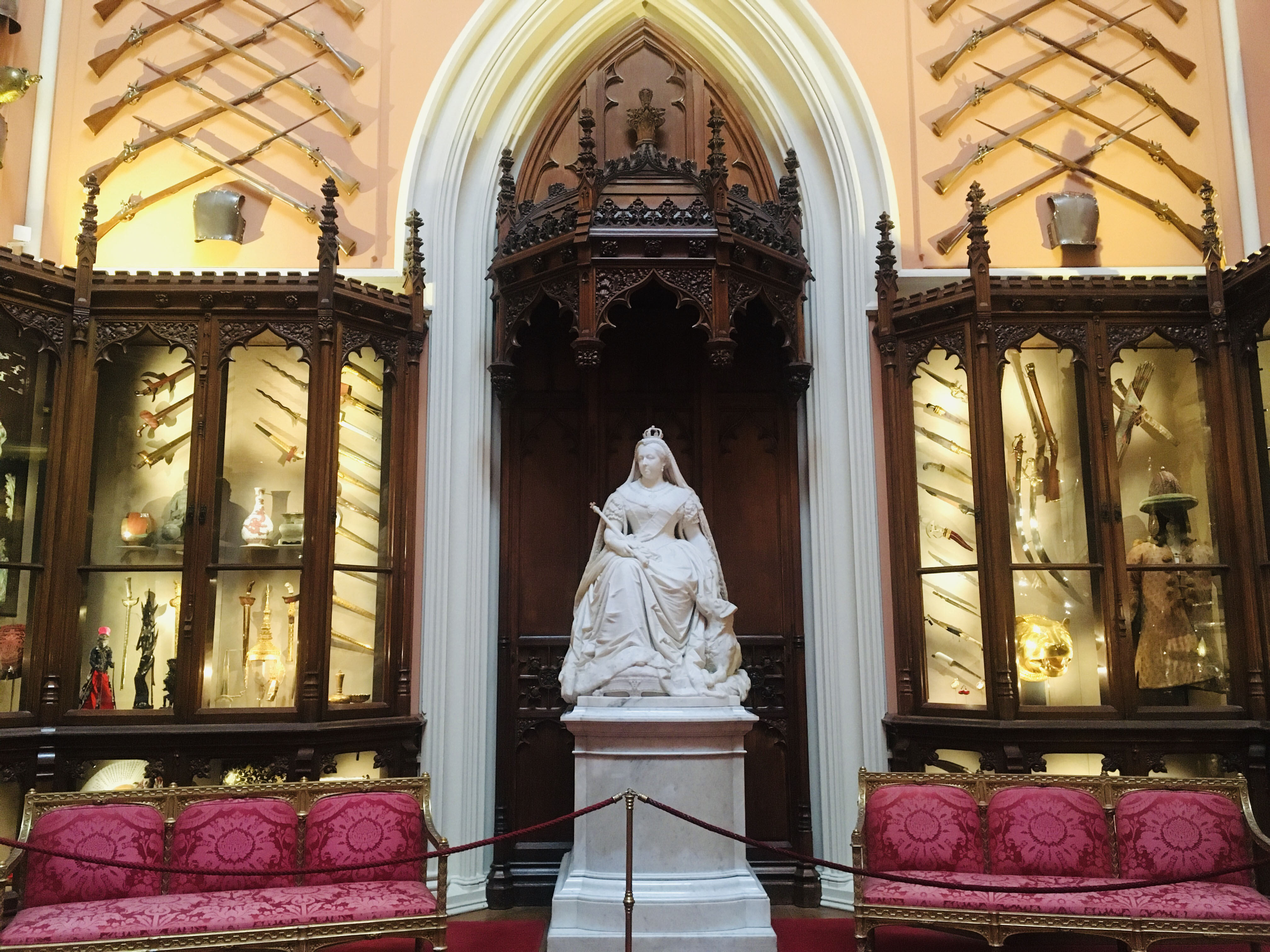
Grand Vestibule: The British Monarchy and the World
The Grand Vestibule at Windsor Castle reflects interaction between the monarchy and the wider world
History of the Room
Works of art from around the globe have been exhibited in this room since the reign of Queen Victoria (r.1837–1901). These historic displays reveal the collecting tastes of individual monarchs as well as the priorities and concerns of previous generations. Today, the new displays maintain the same global focus, but seek to represent as broad as possible a range of cultures.
Creating a room
During the reign of Charles II (r.1649–1685), this space was an open courtyard called Brick Court. In the early nineteenth century, a vaulted ceiling and a staircase leading to the State Apartments were built on the orders of George III. His son, George IV, subsequently removed the staircase and had the area completely covered over, creating the room we know today. For much of Queen Victoria's reign the Grand Vestibule remained sparsely decorated, with only a few banners and weapons arranged on the walls.
Displaying gifts
When Queen Victoria celebrated her Golden Jubilee in 1887, gifts were sent from across the globe. Presents came from Australia, Bermuda, Burma, British Guiana, Canada, the Cape Colony, Ceylon, Egypt, the Gold Coast Colony, Jamaica and Trinidad – among others. By far the largest group was from India, where Queen Victoria had been proclaimed Empress in 1877.
The gifts were displayed to the public at St James’s Palace for three months. When plans were made for their permanent display, the queen suggested using ‘that empty-looking vestibule just beyond the Waterloo Gallery' at Windsor Castle. By the end of the following year, handsome Gothic oak and glass showcases lined with crimson had been installed in the Grand Vestibule by Johnstone and Norman of Bond Street. In March 1888 it was reported that the cabinets were 'crowded with costly presents' and ready for viewing by the public. The same cases, with modern adaptations, remain in the room today.
Military trophies
Queen Victoria's Jubilee Gifts remained on display until 1902. Shortly after his accession, King Edward VII replaced them with a dense display of East Asian and Middle Eastern weapons. Guy Laking, Keeper of the King’s Armoury, oversaw the new arrangement, which included a Japanese samurai armour mounted on the wall, some 12 feet off the ground. The room now took on a more military feel, reinforced by spoils of war such as the gold tiger's head taken from the throne of Tipu, Sultan of Mysore in 1799.
Welcoming guests
The Grand Vestibule has long been used to welcome honoured visitors from beyond the United Kingdom. In 1855, Queen Victoria received the Emperor Napoleon and Empress Eugénie of France here, before leading them to the Throne Room. In 1886, the queen entertained 80 visitors from India, Cyprus, the Cape Colony, British Guiana and Hong Kong who had come to England for the Colonial and Indian Exhibition that year. Today, Yeomen of the Guard still line the Grand Vestibule at the start of a State Visit at Windsor, where Members of the Royal Family have received Heads of State from South America, Africa and East Asia.
The twentieth century
The Grand Vestibule displays remained relatively unchanged during the twentieth century. The few additions to the cases included Queen Victoria's master key to Windsor Castle, two Native American arrows and an assortment of Napoleon's personal effects. In 1971–2 the apartment was redecorated with a soft pink wall colour chosen by The Duke of Edinburgh on the advice of architect Sir Hugh Casson. Minor amendments were made to the case arrangements and in 1975 the dense trophy displays were removed from the walls.
Today, completely new displays maintain the same global focus, but show the broadest ever range of cultures. They acknowledge the complex ways British monarchs have interacted with peoples across the world. Together, they offer all visitors the opportunity to encounter treasured works of art from their own home regions.







